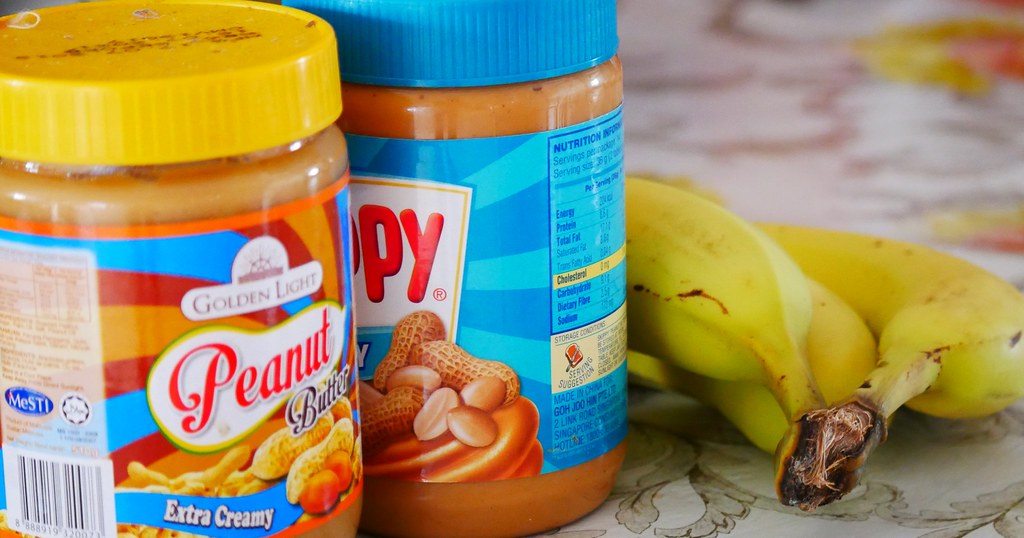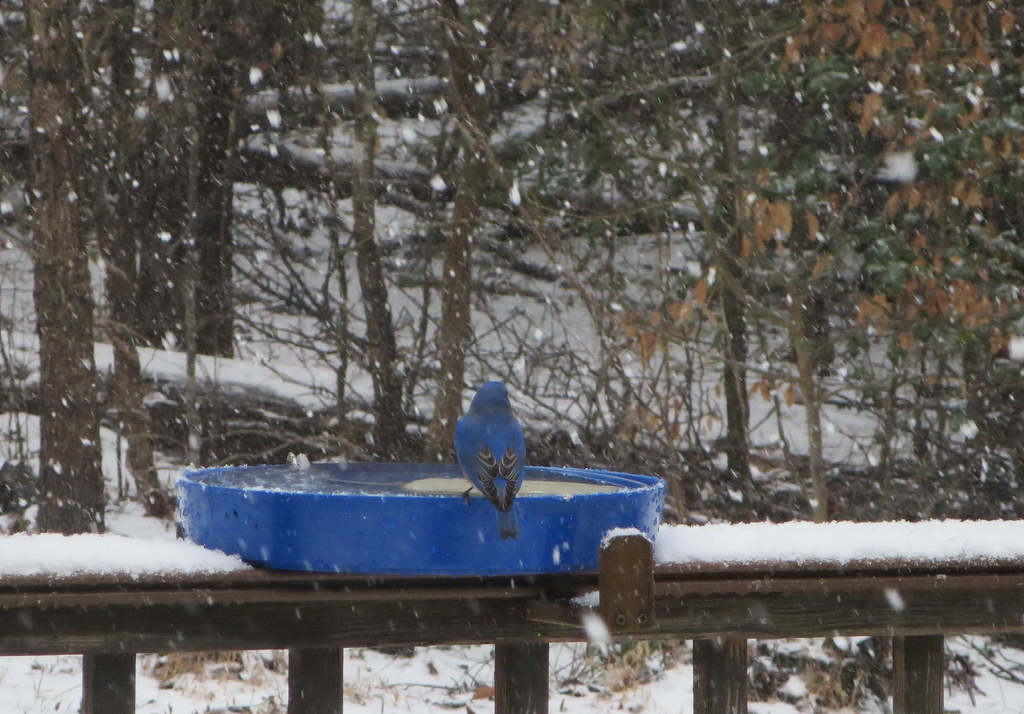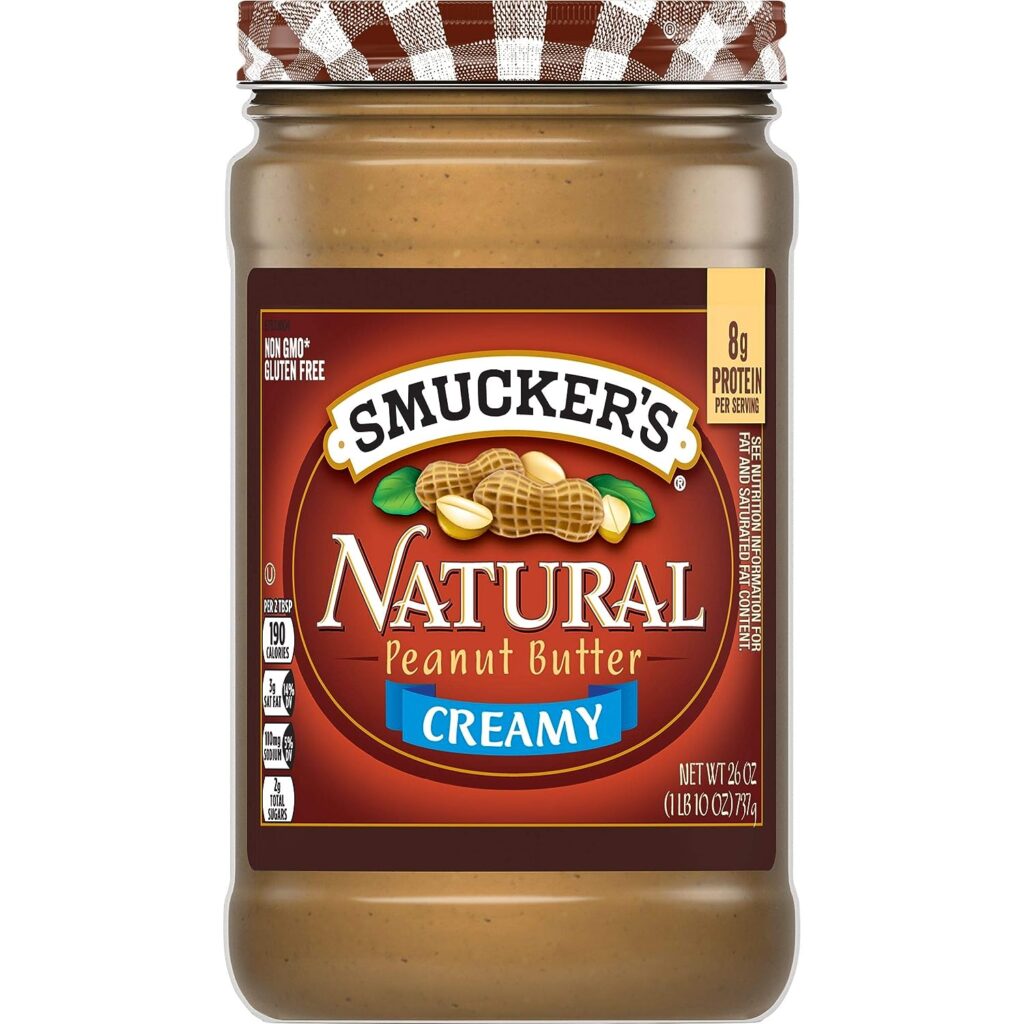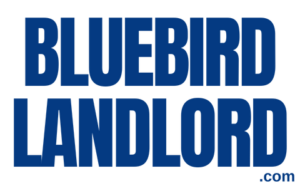
Bluebirds are mostly insect-eaters, devouring countless grasshoppers, moths, spiders, and crickets throughout the course of a day. Because of their insect-heavy diet, you don’t often see bluebirds at bird feeders hanging out with seed-eating birds. However, bluebirds are omnivores and they do love to eat other foods when given the chance. So, what can we offer them at a feeder – fruit, seeds, peanut butter? If you offer peanut butter at a bird feeder, you are probably wondering if bluebirds will actually eat it.
As a general rule, bluebirds will eat peanut butter. Peanut butter is a safe, high-calorie food for bluebirds to eat, especially in the winter months when food may be scarce. It’s best to offer bluebirds a natural form of peanut butter, smeared on a platform feeder, or served in a mealworm feeder.
In this article, we will discuss a few environmental/health concerns when feeding bluebirds peanut butter, the best style and product to use, and how to best serve peanut butter to bluebirds at a feeder. Let’s start with an environmental concern that we should keep in mind.

Environmental & Health Concerns with Feeding Peanut Butter to Bluebirds
It’s best to offer bluebirds a “natural” peanut butter that contains only peanuts and salt. Organic and salt-free options are sometimes available, which are even more ideal. Typical commercial peanut butter products often contain oils and additives that may be harmful to bluebirds and/or the environment.
The standard type of peanut butter commercially available in the USA (think “Jif”) usually contains hydrogenated vegetable oil, which keeps the oil from separating from the solids at room temperature. Unfortunately, hydrogenated vegetable oils are a health concern for humans and possibly to birds as well.
To combat the hydrogenated oil problem, peanut butters companies label alternative products as “natural,” and opt for using palm oil instead of hydrogenated oil. Even though palm oil is a more “natural” alternative to hydrogenated vegetable oil, many people are concerned that palm oil and the industry behind it is particularly harmful to the environment.
Whether or not you are personally concerned about palm oil or hydrogenated vegetable oil, it’s best to serve the most natural product possible to bluebirds, since this is a supplemental and atypical part of their diet. Here’s what to look for at the store.
What Type of Peanut Butter to Use
When choosing a peanut butter to offer bluebirds at the feeder, look for a natural variety that only contains peanuts. Sometimes you can find a health food or grocery store that grinds peanuts onsite into peanut butter. This type of product is ideal since it’s the most wholesome.
If you can’t find a peanut butter that is 100% pure, look for a commercial peanut butter labeled as “natural” – one that contains only peanuts and salt. There are multiple brands that offer peanut butter like this at a reasonable price. My favorite brand is Smucker’s. I usually get the “Smucker’s Natural” creamy peanut butter for feeding to bluebirds.

Do Bluebirds Prefer Creamy or Chunky Peanut Butter?
Bluebirds eat both creamy and chunky peanut butters when they are offered at a feeder. Both can be mixed with other ingredients as well, like cornmeal, hulled sunflower seeds, and raisins.
Some people fear that the chunks in chunky peanut butter will be too difficult for bluebirds to swallow. Fortunately, this doesn’t seem to be a problem. Bluebirds can handle either creamy or chunky peanut butter just fine.
I’ve made “peanut butter muffins” for bluebirds to eat during the winter using the chunky variety of peanut butter. You can find that recipe in the following article on this website: What to Feed Bluebirds in the Winter.
How to Serve Peanut Butter to Bluebirds
You can serve peanut butter to bluebirds in the most simple ways possible. Here are just a few easy ideas that you could do today:
- Spread peanut butter onto a platform feeder
- Put a small dish of peanut butter inside a hanging bluebird feeder
- Spread peanut butter onto some tree bark near the ground where bluebirds will notice it
These ideas are so quick and easy to execute. Essentially, all you need is a jar of peanut butter, and to spread it somewhere where your bluebirds will find it.
You can also serve peanut butter to bluebirds by mixing it in with other ingredients that they enjoy eating. This will give the bluebirds something more interesting to eat, and it will also extend how far the peanut butter goes. Here are a few ingredients that you can mix in with peanut butter:
- Soaked raisins
- Currants
- Blueberries
- Hulled sunflower seeds
- Chopped peanuts
- Dried mealworms
After mixing fruits, mealworms, or other ingredients together with peanut butter, mix in some old-fashioned oats or cornmeal until you get a more solid consistency. Then, serve this mixture directly on a platform feeder, or freeze it in small portions to feed to bluebirds later.
Conclusion
Bluebirds definitely do eat peanut butter. It is a safe, calorie-dense food that bluebirds can enjoy to supplement their diet throughout the year. For most bluebird landlords, adding peanut butter to a platform feeder or hanging mealworm feeder is the easiest way to offer it to bluebirds.
Although bluebirds love to eat peanut butter on occasion, they are made to thrive on a diverse omnivorous diet that changes throughout the year as the seasons change. During the summer, bluebirds should be getting the majority of their nutrition from bugs and insects that they hunt on the ground. Then, in the winter they switch to a more varied diet. Winter is when I have historically started offering peanut butter to bluebirds, since they are usually starting to look for more food sources.
If you are interested in learning more about feeding bluebirds in the winter, read this article that I wrote here. For more fundamental information about how to attract bluebirds to your yard, consider reading this article I wrote here. It’s the best place to get started if you want to become a bluebird landlord.

